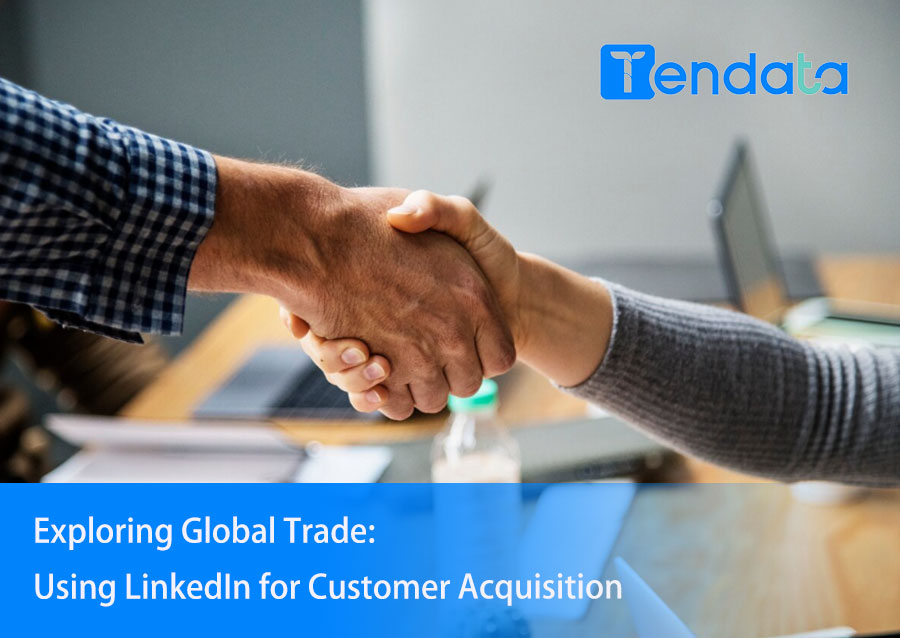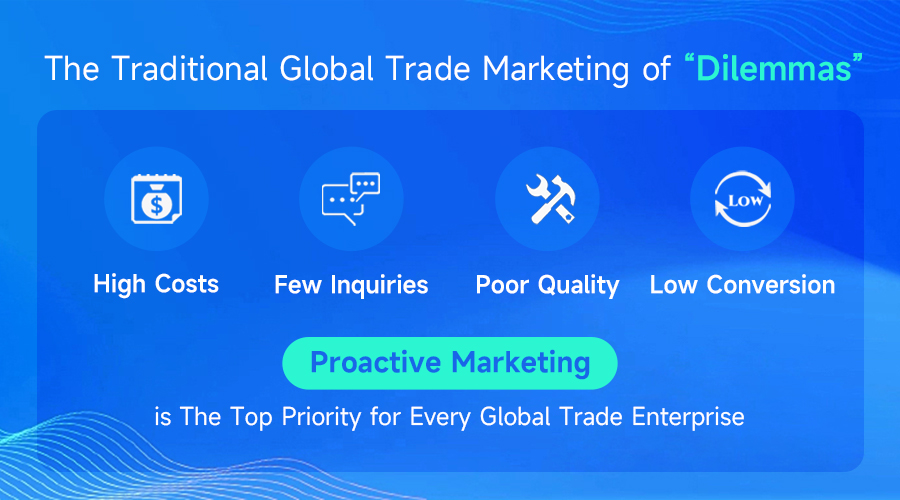 Trade Data Provider
Trade Data Provider
 22-12-2023
22-12-2023
In the ever-expanding realm of global trade, new players entering the market often face the daunting challenge of efficiently finding potential customers. As globalization intensifies, the need to expand business horizons and enhance sales performance becomes more critical. Among the plethora of social media platforms, LinkedIn, the world's largest professional network, has emerged as the preferred tool for customer development among newcomers in the import and export industry.

1. Understanding LinkedIn's Power for Customer Acquisition
LinkedIn provides an array of tools and methods for locating potential customers, making it a valuable asset for those navigating the complexities of international trade. Beyond customer identification, it also facilitates the establishment of robust client relationships, enabling individuals to expand their business networks.
2. Leveraging the Six Degrees of Connection
LinkedIn's famed "Six Degrees of Connection" underscores the platform's potential for connecting with high-value prospects. However, the effectiveness of this feature relies on the precision and accuracy of the first-degree connections. A lack of first-degree connections or imprecise connections can hinder the ability to add high-quality potential clients.
3. Global Trade Landscape in 2023
According to the latest report from the World Trade Organization, global commodity trade is projected to slow from a 3.5% growth rate in 2022 to 1.0% in 2023. The United States' policies of anti-globalization, market segmentation, and attempts to decouple from China will persist, posing multiple challenges for importers and exporters.
4. Challenges in Customer Acquisition
Internally, the traditional approaches to customer acquisition are becoming increasingly challenging. Factors such as declining trade show attendance, high costs of B2B platform traffic, imprecise Google searches, inadequate social media promotion, and intensifying competition contribute to the growing difficulty in customer acquisition for import and export businesses in 2023.
5. External and Internal Challenges
· Limited Customer Channels: Constrained offline channels necessitate the exploration of new customer acquisition methods.
· Reduced Customer Resources: Global economic downturns have led to a decrease in major clients and an increase in smaller clients.
· Marketing Strategy Hurdles: The surge in small client numbers demands a diversified marketing strategy.
· Increased Customer Acquisition Costs: Accelerated digitization pushes import-export enterprises toward online platforms, escalating traffic costs.
Conclusion: Adapting to the New Normal in Customer Acquisition
With limited channels, reduced customer resources, marketing strategy challenges, and higher acquisition costs, import and export businesses must strategize for success. Proactive measures, including early entry into the market and embracing digital transformation, are essential for navigating the complexities of global trade in 2023.
As we usher in the new era of digital economies, Tendata iTrader emerges as a crucial tool, empowering import and export businesses in their digital transformation journey. This SaaS platform is dedicated to providing comprehensive digital marketing solutions, enabling enterprises to seize control of their marketing initiatives and foster sustained growth opportunities. In the age of globalized digital trade, enterprises equipped with the right tools will emerge as industry leaders.
How can Importers/Exporters Proactively develop Customers?
The standards for developing customers for import and export enterprises can be measured from the following data dimensions: purchase volume, profit margin, payment terms, product styles and quality matching, long-term procurement stability, loyalty, procurement potential, communication guidance intensity, local brand influence, risk resistance, and corporate credit rating, etc. Collecting sufficient big data on high-quality customers and creating accurate "profiles" for them has become an indispensable choice for actively developing customers. (>>> Click to Apply for a Free Demo)
With precise customer "profiles" in hand, the next step is to proactively analyze and clarify the other party's needs. Customer development can follow the "5W+1H" principle: What (what does the customer want to purchase), Why (why do they want to purchase), When (when will the purchase take place), Where (from where to make the purchase), Who (who ultimately decides the purchase), and How much (what is the procurement budget). By addressing these six points with relevant questions in the communication process, progress can be made step by step, leading to the formulation of market and pricing strategies and reducing decision-making errors. (>>> Click to Apply for a Free Demo)

Category
Leave Message for Demo Request or Questions


 T-info
T-info T-discovery
T-discovery

 My
Tendata
My
Tendata Market Analysis
Market Analysis Customer
Development
Customer
Development Competitor
Monitoring
Competitor
Monitoring Customer Relationship
Customer Relationship





































































































































